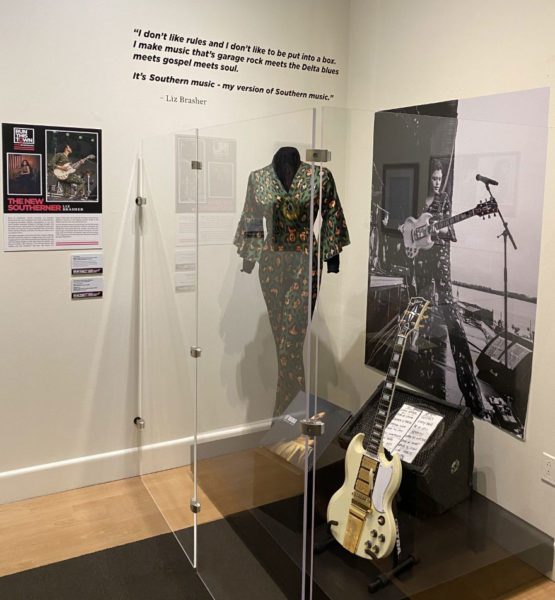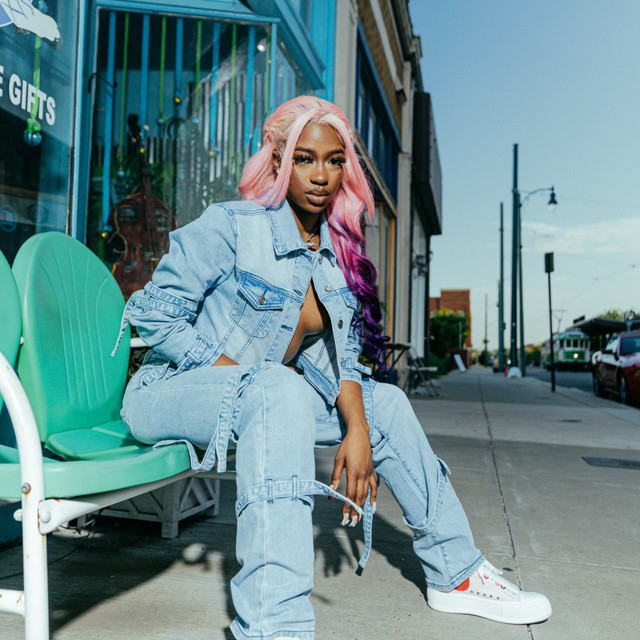Women in Memphis have been gritting and grinding since the beginning and our music industry is no different. It’s not just the male artists and industry execs who have made Memphis soul the powerhouse that we all know and love. There are women, either at the forefront of it all or making magic happen behind the scenes, who have built the Memphis music industry from the ground up.
In 2019, the Stax Museum of American Soul Music shared the accomplishments of women in the Memphis music industry through an exhibit appropriately named “Run This Town: Memphis’ Women of Soul, Past and Present” and We Are Memphis is partnering with Stax to continue celebrating these influential women. When the exhibit ended in 2020, it did without much fanfare because of this whole global pandemic thing – and that just didn’t sit well with us. So we sat down with Stax Museum Executive Director Jeff Kollath to talk about how “Run This Town” paid tribute to the women of today and yesterday. And stay tuned – there will be virtual opportunities to celebrate this month, too!
We Are Memphis Music: Run This Town has such an important message. What inspired you to create the exhibit?
Jeff Kolath: Women in this industry are at the core of our identity as an organization, but it all started with Stax Records and what Estelle Axton did for that company. It wasn’t just working with her brother Jim Stewart, facilitating the making of records, and running the satellite record shop up front, but it was also what she meant to all of the young people she hired and the guidance and leadership she provided for them and the company. She really understood the record business and the music industry. She understood what was hot and paid attention to the customers and kids that came into the store. She was always trying to make things happen and so many people speak so highly of her and what she meant to them. She was truly the heart and soul of the company.
So much so that when we speak about opportunity here at Soulsville, a lot of that comes from her and her brother just giving young people of color the opportunity and the space to be creative. She is so much of the inspiration that we draw from and we thought that the exhibit was a great way to honor her and some of the women of Memphis’ music past. When we started talking about it, we saw the natural parallel between what happened in the past and what is happening in Memphis music today. Women are making a mark and putting Memphis’ music on the map and, even though I wish we could have covered everybody, we drew from those who we’ve worked with in the past and whose work has always impressed us. We included people like my colleague Kimberly Hooper Taylor and our neighbor at Memphis Slim House, Tonya Dyson. She’s always doing something whether it’s running the Kickspins record shop, performing, or just trying to build community through the work that she does. She’s so immensely creative, giving, and caring and works really hard to put Soulsville USA on the map for its current music. It was exciting to highlight her because people in Memphis know who Tonya is, but our guests from outside of Memphis don’t.
It’s also an opportunity to showcase artists like Talibah Safiya and Liz Brasher who we believe represent the original ethos of Stax and come at things in a different sort of way. Liz is an amazing singer-songwriter, but she also plays guitar in her band. That’s inspiring for the young female instrumentalists at the Stax Music Academy. It’s also really powerful that she’s not a Memphis native, but she’s someone who has embraced Memphis. She’s an incredible role model for female musicians, but also just all musicians, period. Talibah is an amazing poet and has taken Memphis soul and brought it into the 21st century. It’s always exciting to give some shine to new Memphis artists. There’s representation from the business side of things too — Elizabeth Cawein is somebody who is, again, so passionate about Memphis and has really blazed her trail. She eats, sleeps, and breathes Memphis music. It’s a credit to her, but also to the city for being so receptive to the work that she does, too.
Everyone is so giving with their time and expertise — I don’t know how some of them find the time to do what they do, but, to me, it’s why I think the title of women in Memphis music is so important. These women have just given their time to Memphis music and believe in it. It’s all in staying here. To me, that’s where a lot of that true authenticity comes from. Staying here because you believe in it. You can hone your craft here, make your way, and then try to get a job in Austin of L.A. or something. Staying here and pushing, believing, and hustling is something special. All the women in the exhibit have done that.

WAMM: Out of the 12 women featured, which is your favorite story and why?
JK: I’m always partial to our good friend Natalie Rosenberg. She is one of the lesser known figures and how she came to be involved is such an amazing story. Her husband was Seymour Rosenberg the lawyer and musician, but Natalie grew up in Memphis. She went to Central High School and used to sneak across the river to go to nightclubs in West Memphis. She fell in love with music and, after she married Seymour and he became involved with Memphis music, there were musicians around all the time. She even tells these stories of Isaac Hayes babysitting her kids.
She eventually started working on and producing records. Like so many others in Memphis — a reason why I love our music community so much — she wasn’t trained to be a record producer or anything. She found herself in the position, had some support, asked the right questions, figured it out, and then started working with these bands. As her husband progressed in his career, she continued to work with the bands and became close with the folks here at Stax. She produced some garage rock and other records for the Hip label which is one of Stax’s subsidiaries. She eventually branched out and built their own studio out of an old service station. They kept the facade and the building behind it, but basically built the studio from scratch. She worked with people to pick the equipment and did all the interior design, but she essentially designed the studio after Stax’s studio. A big difference was that she wanted it to be a place where musicians were comfortable and wanted to hang out– it was more like a lounge. Even the marketing materials for the studio were basically “relax and come make a record.” There’s a photo of her at the console with a big hairdo, false eyelashes, and everything. It’s just awesome. Even after her divorce, she worked in Memphis radio for 20 years. She’s worked at nearly every possible angle of Memphis music and she’s so humble about it. It’s just amazing that she did everything that she did all while raising a family at the same time.
WAMM: If you had to share just one lesson out of the many that someone can learn from the exhibit, what would that be?
JK: We know we’re not the only ones to do this, but a big thing that we talk about at the museum is that people should never forget that the Memphis music we know and love would never have existed without women being at the forefront. From Marion Keister recording Elvis Presley when he came into Sun Studios, Estelle Axton, all the amazing work that Deanie Parker did to promote Stax artists, helping create the Soulsville Foundation, Stax Academy, and the Stax Museum, and Bettye Berger who managed artists and was a radio DJ to the current industry with people like Liz, Tonya, Elizabeth, Kirby, and Talibah.
Soul music being such a male–dominated genre, and you often think of Stax’s big artists like Otis and Isaac. But you’ve got incredible female artists from Carla Thomas, Wendy Rene, and the amazing Shirley Brown. Women have always played such an important role here at Stax and I think that’s why we were inspired to do this exhibit and why we continue to talk about it. It’s also so important for all the women at the Stax Music Academy, too. They’re the next generation. Women in music doesn’t just start with Marion and Elvis, it goes back through gospel, blues, jazz, and even further back. It’s been a century-plus — way more than four or five generations.
It’s such an empowering story and, for us, it’s just one more thing that we want everyone, but especially Memphians, to learn and understand about this community. It’s not just Elvis and all the other male artists. As far as the business side of things, making the companies go, promoting records, and sharing with the industry, through all of that incredible work, there was a woman involved at every step.
You might also be interested in: Live Music Memphis Tonight | Memphis Live Music Calendar







